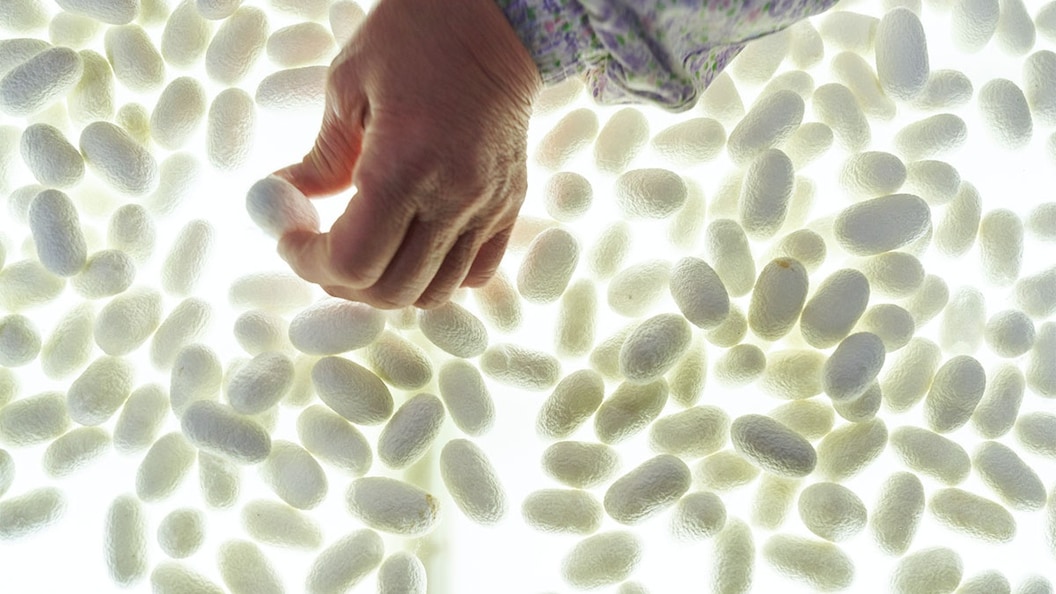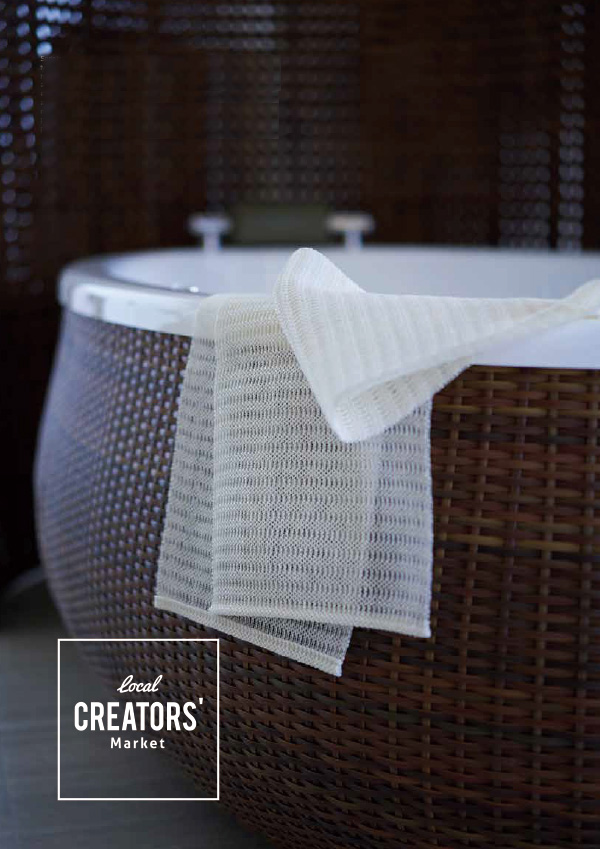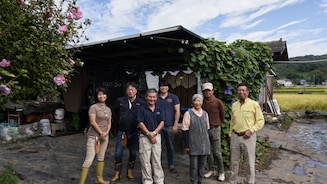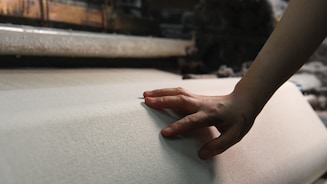Brand Highlights–Gunma Silk
- • Washcloths and soaps made with sericin, highly eff ective in skincare
- • Environmental commitment: no formalin used in silk reeling
- • Support of local sericulture farms through original product development
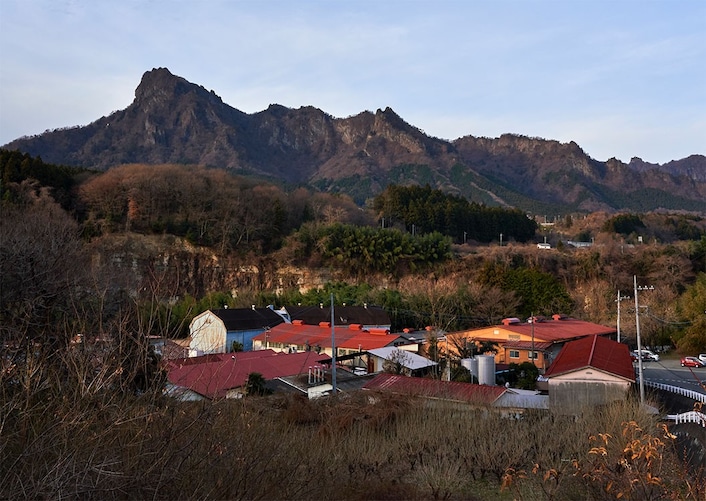
Japan’s top silk producer, Gunma is home to the “Tomioka Silk Mill and Related Sites” recognized by UNESCO on its World Heritage list. Despite these achievements, sericulture farms and silk mills in the prefecture have declined drastically in number, pressured by the lower prices of synthetic fi bers and raw silk threads made abroad. Yet when it comes to quality, Gunma silk has clear advantages over such competition. Sericin, a natural protein secreted by the Bombyx mori silkworm larva to coat the outer layer of the silk fi lament, is not removed in the production of Gunma silk.
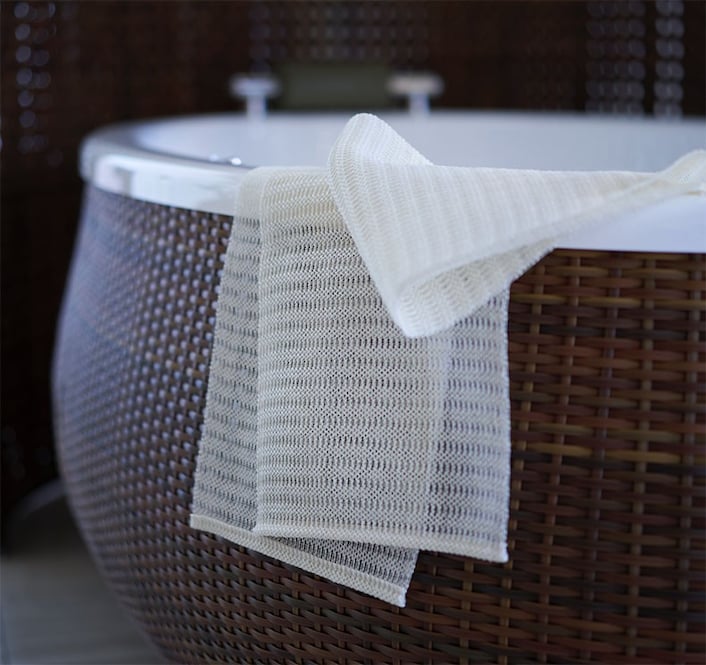
This valuable polymer is rich in serine, an amino acid with a similar composition to human skin. Its biocompatibility makes serine well suited for cosmetic and medicinal applications. An eff ective antioxidant, it has excellent moisture release, water absorption, anti-wrinkling, and antibacterial properties, and can be used for UV protection as well as wound healing. Silk products made in Gunma are especially popular among people with allergic or sensitive skin.
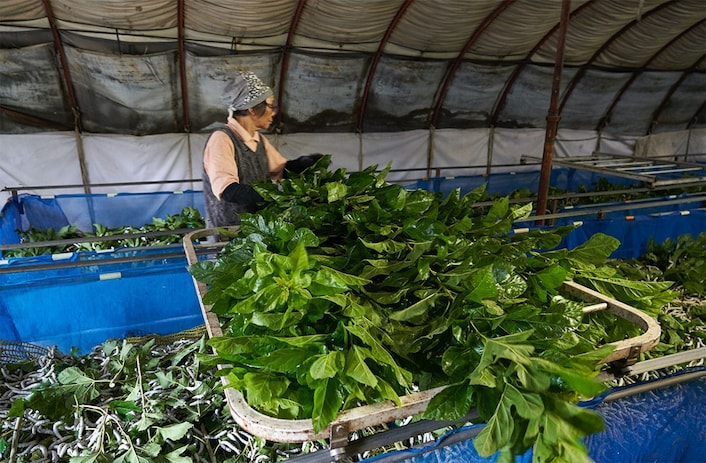
All steps in production, from growing the mulberries on which the Bombyx mori larvae feed to raising them, breeding new varieties, and harvesting and reeling their silk, are performed entirely in Gunma. The small carbon footprint and sustainability of Gunma silk are additional competitive advantages. In Japan alone more than one million tons of clothing are disposed of each year. As worldwide concern about oceanic microfi ber pollution grows, fashion brands must engage in responsible procurement at all stages of production. Gunma silk is gentle not only on the skin, but on the environment as well. It is just the kind of industry we need to preserve and pass on to future generations.
Gentle skincare items made with sericin, a silk by-product

The filament of a silkworm’s cocoon is made of two types of protein:
fi broin, the structural center accounting for 70 to 80 percent, and sericin, the adhesive binder that coats the latter with sticky layers to aid in the cocoon’s formation. In the textile industry sericin is typically removed during raw-silk production and discharged into the water system as waste. In Gunma, however, methods have been devised to retrieve this valuable all-natural polymer for optimal use of its many properties listed below.
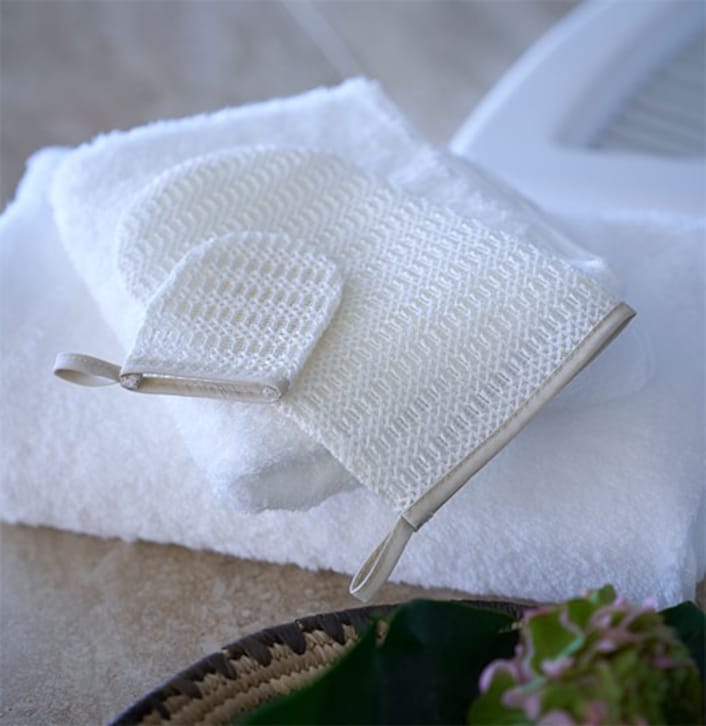
1. Moisturizing
Serine, which accounts for some 20 to 30 percent of the sericin protein, is the most abundant amino acid in the protective chemical
coat produced by the outer layer of our skin. A natural humectant, it facilitates water absorption and enhances elasticity,
making it eff ective in both hair conditioning and anti-wrinkle treatments.
2. Protective Coating
Sericin creates a thin fi lm on the surface of skin and hair, reducing moisture evaporation and preventing drying.
3. Antioxidant Qualities
The antioxidant power of sericin is equivalent to that of vitamin C,
helping to prevent wrinkles and pigmentation.
4. Brightening
Sericin inhibits tyrosinase, an enzyme that catalyzes the production
of melanin and other darkening pigments in response to environmental factors.
5. UV Defense
The silk amino acids tyrosine and tryptophan absorb harmful UV
rays and protect the skin. The yellowing of silk over time is an
indicator of this eff ect: the protein fi bers turn yellowish-brown in
response to light.
6. Static Electricity Prevention
Sericin has excellent absorbency. Its ability to retain moisture
eff ectively discharges static electricity.
It’s no surprise that the silkworm’s cocoon, built to shelter the
pupa from natural elements as it develops, is equipped with
natural defense capabilities—just like the skin of a fruit.
Please refer to the Story Book for more article.

